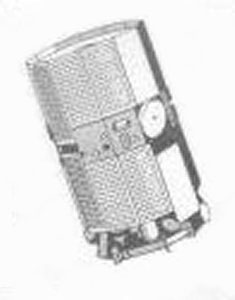Radsat
Radsat

The Radsat satellite. (Credit: USAF)
Lifetime: October 1972 - April 1974 (Solar Progot, Deuteron, Triton Solid-State Telescope turned off)
Operator (primary): United States
Primary Science
The objectives of Radsat was to measure the background gamma radiation over the whole Earth in the 100 to 300 keV range and in the >700 keV range. In addition, Radsat tested the effects of the space environment on various thermal control coatings and observed extreme and far ultraviolet radiation from local and galactic sources.
Science Highlights
- Observed several gamma-ray bursts also observed by the Vela satellites
- In one gamma-ray burst, a short (~60 microsecond) burst was seen before the Vela trigger

